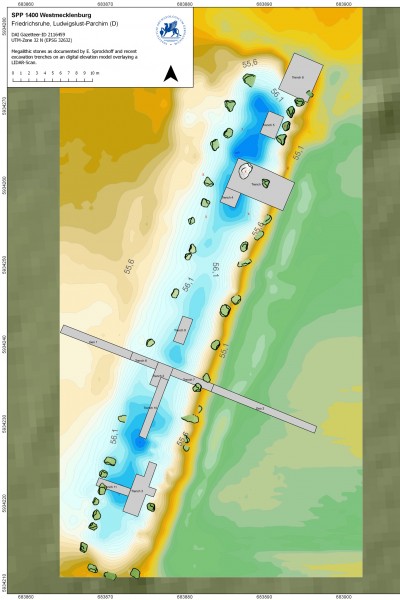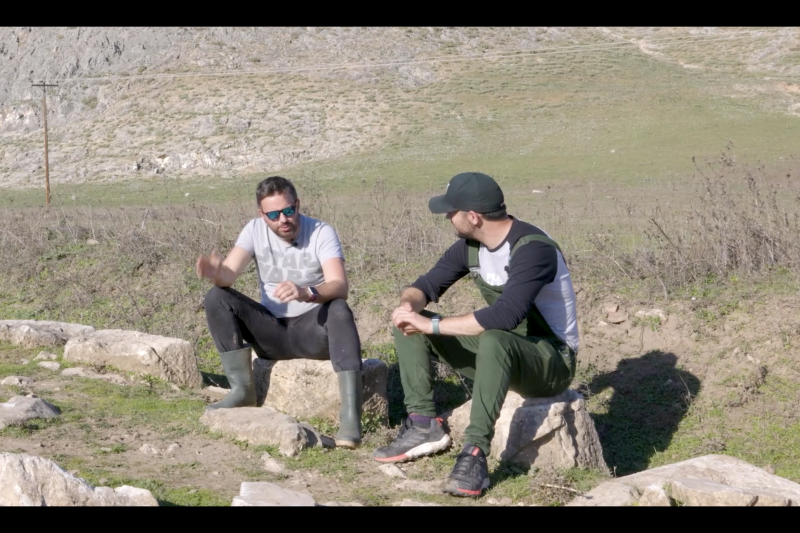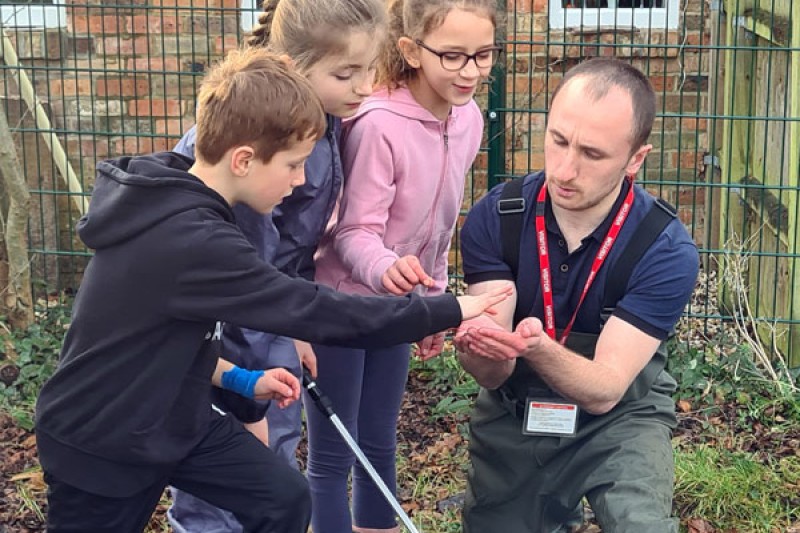A major international research programme on Early Monumentality and Social Differentiation (Frühe Monumentalität und Soziale Differenzierung) funded by the German research Foundation (DFG Priority Programme 1400) began in 2009.
Its aim was to investigate the origin and development of large-scale monuments, and the emergence of early complex societies, on the north European Plain, and to examine the relations between monumental building and social structures after the emergence of sedentism at around 4100 BC.
Coordinated by the Institut für Ur- und Frühgeschichte, Christian-Albrechts-Universität in Kiel, a total of 22 university departments, research institutes, and heritage management offices were involved in delivering 16 contributing projects [Link: The Priority Program: Frühe Monumentalität und soziale Differenzierung - SPP 1400 (uni-kiel.de)]. Seven regional case studies were set alongside, and provide samples and data for, ten thematic investigations. One of the case studies (Project “Frühe Monumentalität in West Mecklenburg” Link: Early Monumentality and Social Differentiation in Western Mecklenburg: Frühe Monumentalität und soziale Differenzierung - SPP 1400 (uni-kiel.de)].) focused on the early monuments of western Mecklenburg with fieldwork carried out between 2009 and 2015.
Selecting suitable sites to sample as part of the First Monuments and Social Differentiation project was far from easy. A study of the social background to megalithic moments in northeastern Germany by Steinmann in 2001 emphasised the diversity of structural form, while excavations at Flintbek show how complicated the development and phasing of individual sites can be. A visual inspection of megalithic tombs in order to identify sites with high potential for dating and identifying sequences of construction led to the definition of the cemetery at Friedrichsruhe as a major target. Here the aim was to examine the mounds in order to explore the structure and development of these monuments rather than their chambers. Three mounds were examined and local sequences of development established.
Geophysical surveys were carried out on the enclosures at Plate 3, Plate 14, Gädebehn 10, Ruthen 17, and Zietlitz 1, which led to excavations being focused on three sites: Plate 3 and 14, and Gädebehn 10. Geophysical surveys were also undertaken at Ostorf to assess the likelihood of further unexcavated burials being present. Sample excavations based on these results, together with a review of the position and extent of earlier excavations, revealed a previously unknown inhumation grave.
Post excavation analysis is in progress and a full report is in preparation. An interim account is available [Link to D1 pdf]:

![View of Friedichsruhe 7 after clearance of the mound prior to excavation. Looking north with the long mound in the foreground and the northern round mound beyond. [Photograph by Timothy Darvill] View of Friedichsruhe 7 after clearance of the mound prior to excavation. Looking north with the long mound in the foreground and the northern round mound beyond. [Photograph by Timothy Darvill]](https://www.bournemouth.ac.uk/sites/default/files/styles/bournemouth_wysiwyg/public/assets/images/View-of-Friedichsruhe-7-after-clearance-.jpg?itok=LsdSj-Jj) View of Friedichsruhe 7 after clearance of the mound prior to excavation. Looking north with the long mound in the foreground and the northern round mound beyond. [Photograph by Timothy Darvill]
View of Friedichsruhe 7 after clearance of the mound prior to excavation. Looking north with the long mound in the foreground and the northern round mound beyond. [Photograph by Timothy Darvill] ![View of excavations in progress at Friedichsruhe 7 (north). [Photograph by Timothy Darvill] View of excavations in progress at Friedichsruhe 7 (north). [Photograph by Timothy Darvill]](https://www.bournemouth.ac.uk/sites/default/files/styles/bournemouth_wysiwyg/public/assets/images/View-of-excavations-in-progress-at-Friedichsruhe-7-.jpg?itok=RN7m9zpe) View of excavations in progress at Friedichsruhe 7 (north). [Photograph by Timothy Darvill]
View of excavations in progress at Friedichsruhe 7 (north). [Photograph by Timothy Darvill]

